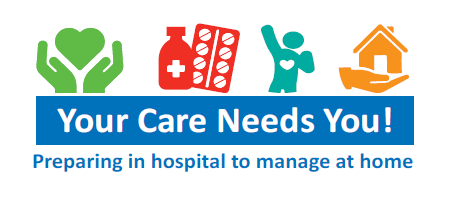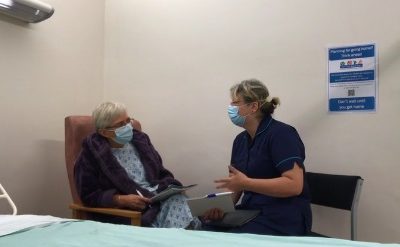A really bad example: How not to introduce Your Care Needs You!
This short film shows you the fastest and worst way to introduce Your Care Needs You! What can you see that isn’t right about this approach? Can you reflect on what might happen because of the way this has been introduced? Some pointers are provided below:
- What could happen to the booklet before the patient returns?
- Patients and staff think Your Care Needs You! is only a booklet (and not film and advice sheet)
- No other communication is required to make Your Care needs You! work on the ward
- Patients think that staff don’t see it as important – if it’s not important to staff, patients won’t take it seriously
A bad example
In this example, the patient is present when the nurse introduces the booklet. However there are a a few things that she could have done better. See if you can spot them. Some pointers are below:
- Does reading from the front of the booklet make it look like Your Care Needs You! is important?
- How is saying it’s ‘about going home really’ mislead patients?
- Where is the opportunity for the patient to ask questions?
- What’s the problem with where the booklet is left?
- What about the patient film?
A better example
Here the nurse asks for the patient’s permission to explain Your Care Needs You!
She explains the booklet and offers the opportunity to ask questions. However you can hear that she is in a bit of a rush and patients will pick up on this and avoid asking questions. She mentions the film but doesn’t have it to hand – this could easily be forgotten about on a busy ward.
A great example: How to best introduce Your Care Needs You!
Here the nurse asks permission to talk to the patient. Her speech is slower than in previous examples and she goes through the main parts of the booklet with the patient – encouraging patients to think ahead and get ready for going home. She encourages the patient to write down questions but does this in a way that isn’t patronising… even saying that she needs to write down things so she doesn’t forget.
Finally, the nurse has the patient film on a device ready to show the patient. This means that the film won’t be forgotten about and the patient can watch it while the booklet is still fresh in her mind.
In these examples the advice sheet isn’t mentioned – would you give that out separately or at the same time as the booklet and film?
Staff can download this prompt sheet to help them introduce Your Care Needs You! The information is also displayed on smaller prompt cards for practicaclity.



